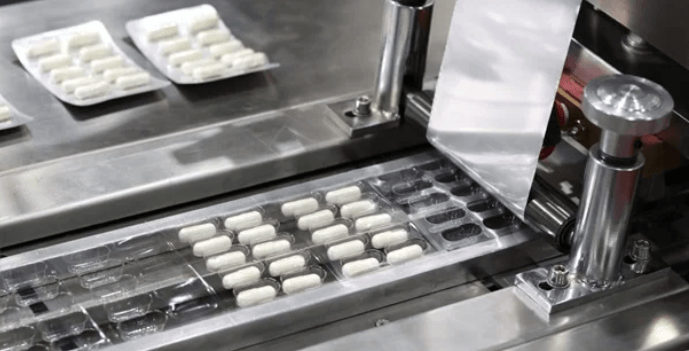Introduction
The pharmaceutical industry is one of the most regulated in the world, and that can make it difficult for companies in this space to utilize different types of packaging. In some cases, governments have placed restrictions on the use of certain materials due to concerns about contamination or other issues. However, there are some circumstances where paper tube packaging is allowed. These containers are made from biodegradable material which has several benefits over plastic alternatives.
The pharmaceutical industry has often placed restrictions on the use of paper-based packaging.
The pharmaceutical industry has often placed restrictions on the use of paper-based packaging. This change was made in order to ensure that patients receive safe, high-quality medicines that meet their healthcare needs. However, there are several benefits that come from utilizing paper tube packaging for pharmaceutical products:
- Easy to open: The majority of people have difficulty opening plastic containers and bottles. With a simple tear or cut, however,* you can access your medication quickly and easily.*
- Cost-effective: Paper tubes are much less expensive than plastic containers and bottles because they do not require any additional processing steps such as injection molding or blow molding.*
- Recyclable: If you choose not to use your medication once it has been opened (or if you simply want another option), then it is easy enough to recycle the tube after removing all traces of contents within.*
In recent years, governments have begun to relax these restrictions and allow paper-based packaging to be utilized in limited situations.
In recent years, governments have begun to relax these restrictions and allow paper-based packaging to be utilized in limited situations. This is due in part to the fact that paper tube packaging is biodegradable and recyclable which makes it more environmentally friendly than plastic. Additionally, the cost of producing this type of packaging is much lower than traditional plastic containers.
In some cases, the FDA has even given companies permission to use paper for packaging specific drug products.
In some cases, the FDA has even given companies permission to use paper for packaging specific drug products. For example, if your company is manufacturing an injectable drug that’s sensitive to light, heat, and moisture (a “warm” product), then you may be able to use a paper tube instead of plastic or glass containers.
Likewise, if your product has a short shelf life–like insulin or other medications with a limited shelf life–or requires refrigeration during storage or transportation (such as vaccines), then it makes sense that you’d want something lightweight like paper tubes over heavier materials like glass bottles or aluminum cans which would add extra weight per unit quantity shipped out into stores nationwide!
The reason for this change is that there are several benefits that come from utilizing paper tube packaging for pharmaceutical products.
The reason for this change is that there are several benefits that come from utilizing paper tube packaging for pharmaceutical products.
First of all, it’s cheaper than plastic. The price per unit of a paper tube can be as low as $0.05 while the cost of producing plastic tubes is around $0.10-$0.14 per piece (depending on the size). The cost difference between these two options makes it very easy to see why many manufacturers have made the switch over to using paper tubes only in their packaging processes!
Another benefit that comes with using these types of materials is how environmentally friendly they are compared with other types like plastic or glass bottles which contain hazardous materials such as lead and phthalates which may leak into our environment if not disposed of properly after use.”
One of the most important benefits of using a cardboard tube as opposed to plastic is that it can be recycled easily after being used.
Cardboard is a natural product and has one of the best recycling rates out there at 86%, compared to only about 40% for plastic. This means that you can help the environment by choosing cylinder containers cardboard overplastic, as well as saving money on your packaging costs.
Cardboard can also be used for other purposes after you have finished using it for your paper tube packaging needs! If you want to make sure that all parts of your business are environmentally conscious, consider using recycled materials like cardboard instead of buying new products from companies that may not have sustainable practices in place yet (or ever).
These types of containers are made from materials that are biodegradable and recyclable.
These types of containers are made from materials that are biodegradable and recyclable. Cardboard is a natural material, so it can be recycled and reused without losing its integrity or quality. For example, when you purchase a paper tube packaging product, the cardboard tube can be recycled into more products like magazine holders or cereal boxes after you’re done with it!
According to Help Reduce, cardboard has one of the best recycling rates out there at 86%, compared to only about 40% for plastic.
Cardboard is made from renewable resources and can be recycled into new cardboard. It has one of the best recycling rates out there at 86%, compared to only about 40% for plastic.
Because the FDA allows certain drugs to be packed in paper tubes, they are becoming more popular in the pharmaceutical industry
Paper tubes are becoming a more popular packaging option for pharmaceutical companies. They are more environmentally friendly than plastic, easier to recycle, and have the added benefit of being cheaper than plastic.
The FDA allows certain drugs to be packed in paper tubes because they are considered an “environmentally preferable” packaging material. A study published in The Journal of Pharmaceutical Technology & Sciences found that the use of paper tubes as a packaging material reduces carbon emissions by up to 70% compared with plastics like PVC or HDPE (high-density polyethylene).
Conclusion
If you’re looking for a new way to package your pharmaceutical products, we would recommend considering thin cardboard tubes. These types of containers are made from materials that are biodegradable and recyclable. According to Help Reduce, cardboard has one of the best recycling rates out there at 86%, compared to only about 40% for plastic.







